A travel guide to the Forbidden City museum. What to see, how to get there and where to buy the tickets.
Have you heard of the Forbidden City of the Chinese Emperors? A city-like palace where no male, but the Emperor of China himself, was allowed after nightfall? So huge, that it’s impossible to see either end – no matter where you stand?
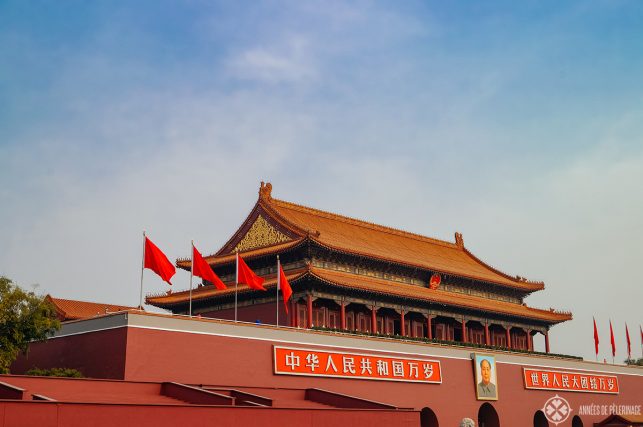
The Forbidden City in Beijing was, for more than 400 years, the political, cultural and spiritual center of Asia. During centuries upon centuries, 24 emperors of the Ming and Qing dynasty exerted their absolute power of China and all dependent states from here. Like so many others I’ve seen the movie “The Last Emperor”, but obviously it was Zhu Di who started the construction of the palace complex half a Millenium earlier.
Of course, I have seen Mao’s portrait hanging high up on the walls of the entrance – maybe the most iconic image of China. The whole concept of a city secluded behind high walls and forbidden to all males thrilled me from the early days of my childhood. It took, however, more than 30 years until my dream of seeing this UNESCO World Heritage site finally became true.
I could list a lot of excuses for not visiting earlier here, none of them truly valid, but instead, I’ll try to express how far off my expectations were from the real thing. I knew the Forbidden City was big – 180 acres to be precise. The Vatican is 110 acres. Are they similar in size? Not at all!
Where the Vatican is intricate, the Forbidden City is mind-blowing. A megalomaniac human effort that, despite having spent a fair amount of time there, still escapes me! A day, I want to be quite honest with you, is not enough to explore its cultural riches.
Also in terms of walk length, I could name anything even faintly similar. I’ve been to the Hermitage in St. Petersburg home to the Russian tsars. Now art galleries stretching an estimated 24 kilometers are filling up the palace – yet even that cannot compare to the grand UNESCO World Heritage site in Beijing.
Entering the Forbidden City in Beijing
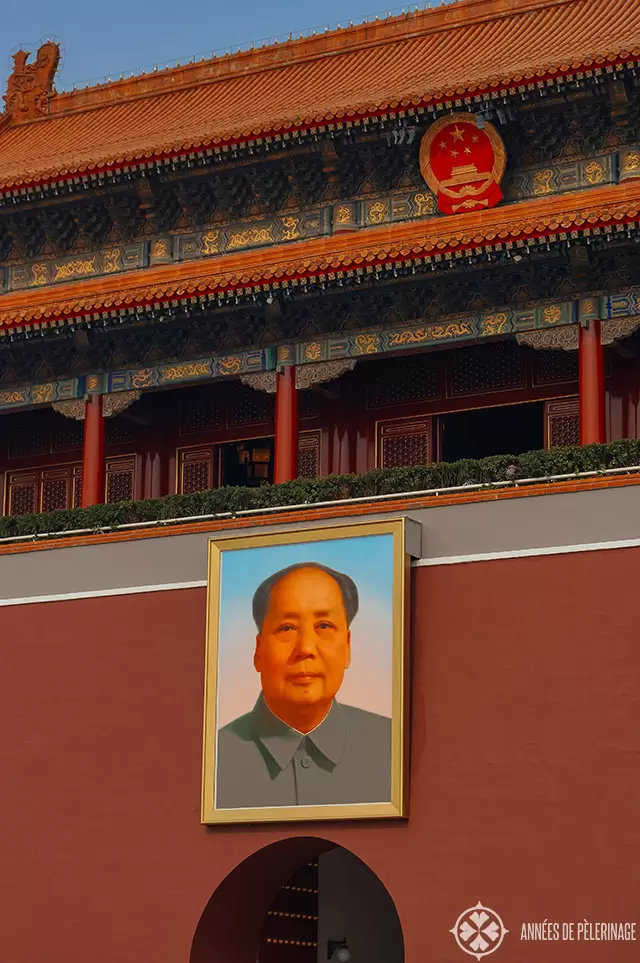
With a palace as big as the Forbidden City you might assume there are a couple of entrances and exits. There is, however, just one gate open for tourists and that starts on Tiananmen Square. Basically, you walk through right below Mao’s benevolent smile (well one arch to the right to be precise – wouldn’t want to invite blasphemy).
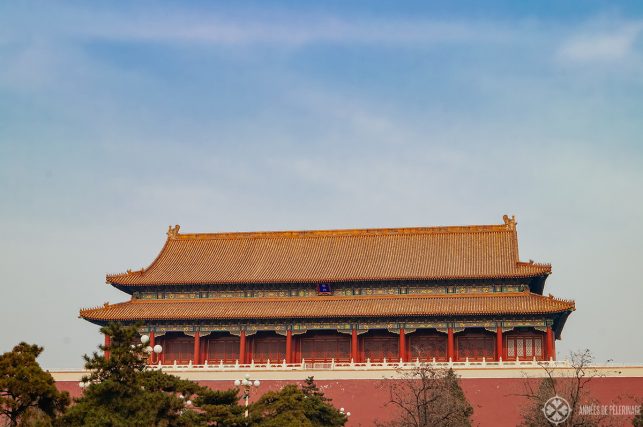
Like so many others on that day, that is where I started my tour. Once through, a sweeping square opened up in front of me. The square is so big some European palaces would easily fit in. It involuntarily made me think: “Finally I reached my goal, finally I am inside the Forbidden City”. But god was I wrong!
In the distance, a couple of hundred meters away, I saw a big palace looming over a bright red wall. A blue device below the roof, I was quite certain, indicated that this must be the Hall of Utmost Celestial Harmony or some such name. In fact, I would learn later, this was just the smallest of gatehouses before the actual entrance – just to give you the first sense of scale!
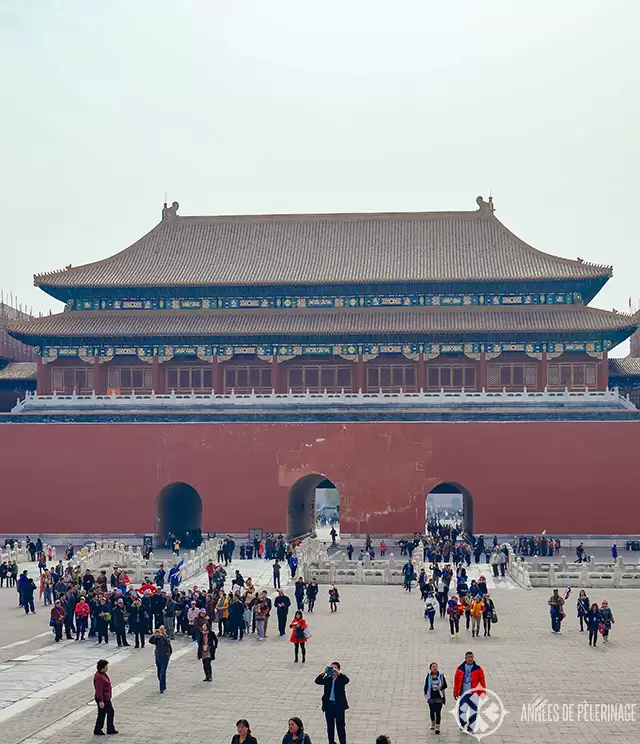
So there I was, thinking what not and gaping like the worst first-time traveler. Cursing Beijing’s constantly overcast smog-sky, I moved on gripping my camera tightly. After this first gate, another huge courtyard followed. This one was yet bigger and home to the tourist office and the ticket booths. Being one of the few white (and blond on top of that) tourists, a loudly fought contest among the local tourist guides started over me: “Sir. Private tour – only for you! Sir, Sir….”.
I more or less ignored them as best as I could and got my lone ticket. Much to my disbelief, there were no real queues or any prolonged wait.
Along with my ticket for 60 Yuan, I got a map of the Forbidden City. It told me like I will tell you now, that the gate ahead with its three tunneling arches was the actual entrance. It is called the Meridian Gate, but that helps little in the way of explaining the need for an entrance that big. Then again thoughts like that will lead you nowhere inside the megalomaniac palace complex. You just have to accept that everything is bigger than anywhere else in the world.
Through the Meridian Gate into the actual Forbidden City
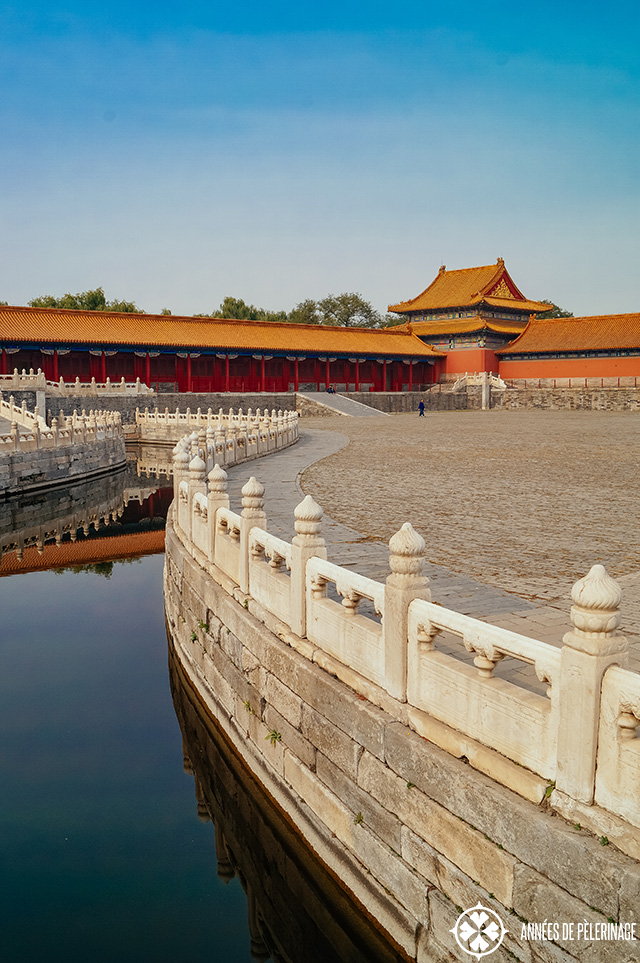
Behind the Meridian Gate, the once forbidden grounds of the Imperial Palace start in earnest. Due to big walls blocking the view to the sides, you will not notice crossing the huge moat surrounding the whole complex. Behind the gate follows another square. This one is yet bigger and intersected by a canal called the “Inner Golden Water River”.
An average of 40,000 thousand tourists visit the Palace Museum, how the Forbidden City is officially called, each day and already the thick stream of humanity dwindled down to almost a trickle. The main paths are still lively but glancing at the sides little to no traffic can be seen. Quite astonishing, if you think about it, and another indication of how big this place really is!
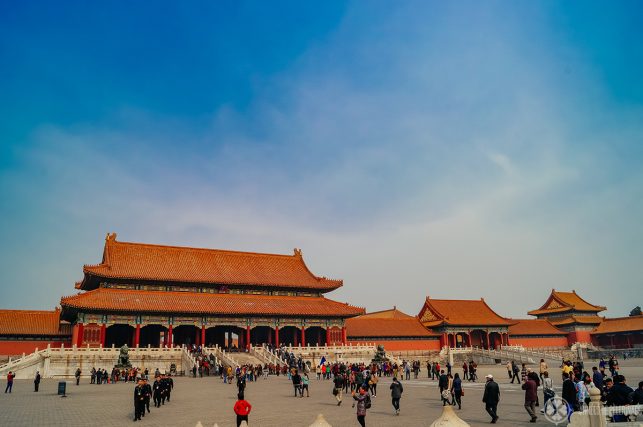
Five Bridges reach across the artificial river and invite me to explore the Gate of Supreme Harmony. On your tour through the palace museum, you will soon notice that every structure here is Gate of this and Harmony of that.
While you will probably not be able to remember everything, much like I, it still serves as a constant reminder that the Chinese Emperors reached for more when building a high-security complex. It was not only the worldly center but also the spiritual center of an empire spanning the whole Asian continent. The daily rituals they performed were, so they believed, quintessential for the lasting stability and prosperity of the imperium.
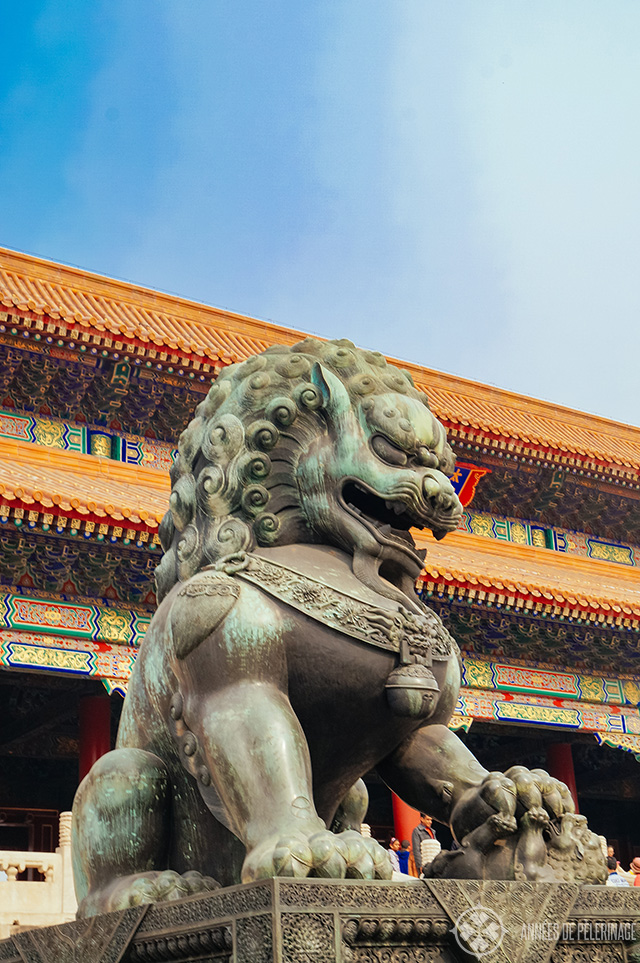
Before the Gate of Supreme Harmony rise two giant bronze lions. A couple of meters high, these well-aged fellows certainly serve as impressive guardians to the splendor beyond. For a time, the audio guide informs me, the morning audience of the emperor used to be held here. Impressed, and already struggling to take in all details, I walk onwards.
The Hall of Supreme Harmony
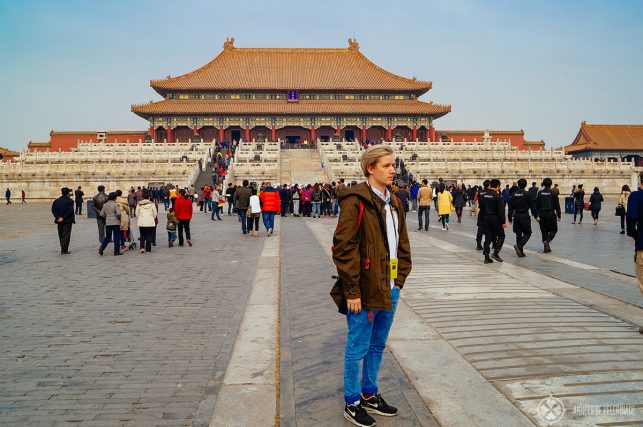
Through the awnings of the Gate of Supreme Harmony, I spot the culmination of Chinese palatial architecture: The Hall of Supreme Harmony. Said to be the largest wooden structure in China, this is where the Emperors of the Qing and Ming Dynasty held their coronation ceremonies, weddings, and investitures!
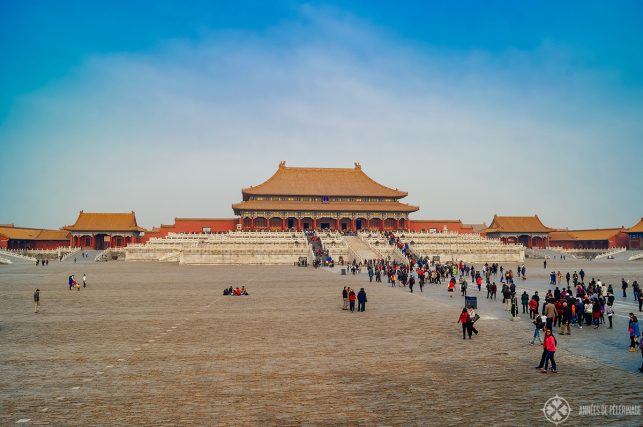
Before the Hall of Supreme Harmony, another courtyard stretches – seemingly to the horizon and back. All sense of scale, if not proportion, must have eluded the Chinese emperors when constructing the Forbidden City. The sheer size of the open space in front of the Hall of Supreme Harmony will make you feel smaller than an ant. Quite possibly that was its sole intent.
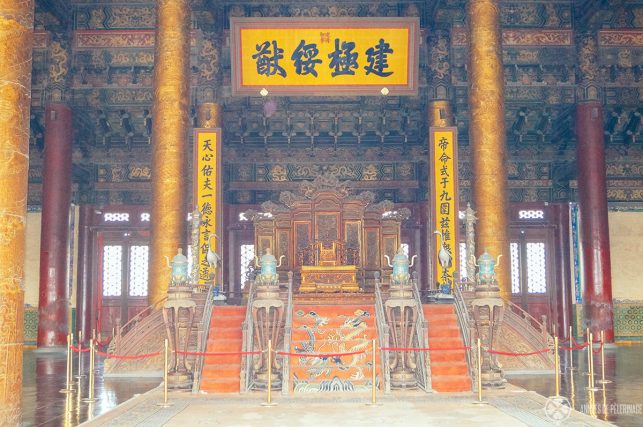
A huge golden throne hides within. I must admit, though, that I had expected something more spectacular. While all walls and pillars are richly decorated, the throne itself failed to impress me. In a way, it really boils down to an ornate seat raised on a dais with some faded tapestries spread around it. Speaking solely for myself, it is the architecture, not its interiors, creating the unique atmosphere of a UNESCO World Heritage site.
The tour through the Forbidden City continues
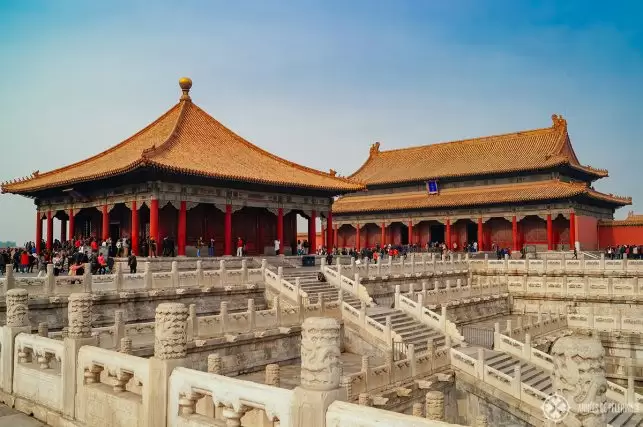
The Hall of Supreme Harmony might be the biggest structure that you will see ton your tour, but it marks by no means the end of it. In fact, it only highlights the beginning. Following the spacious throne room yet more courtyards, gates, and palaces present themselves to me on the central axis. I reached the Hall of Central Harmony and the Hall of Preserving Harmony next. Those two Halls stand in close proximity and mark the end of the Outer Court.
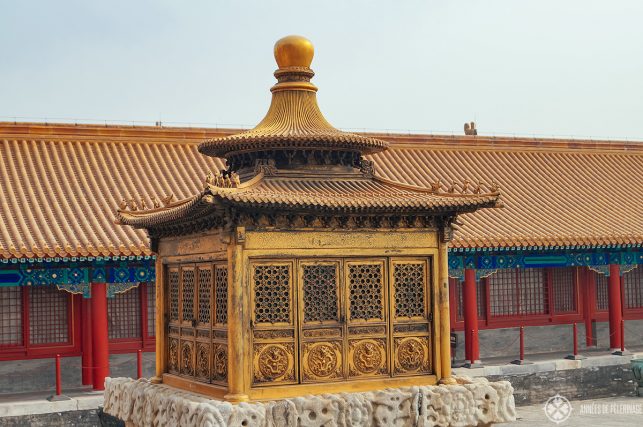
The Inner Court was where the true power seat of the Chinese Emperors was located. All halls, gates, and palaces you have seen so far on my pictures were mostly for ceremonial purposes only – the living and working rooms of the Qing Emperors were yet more secluded. They do not, however, look very much different. They may be smaller, but they are still on the central axis and they still keep to the pattern courtyard, palace, gate, courtyard, palace. In fact, the only difference I could make out were some golden shrines flanking the palaces of the Inner Court.
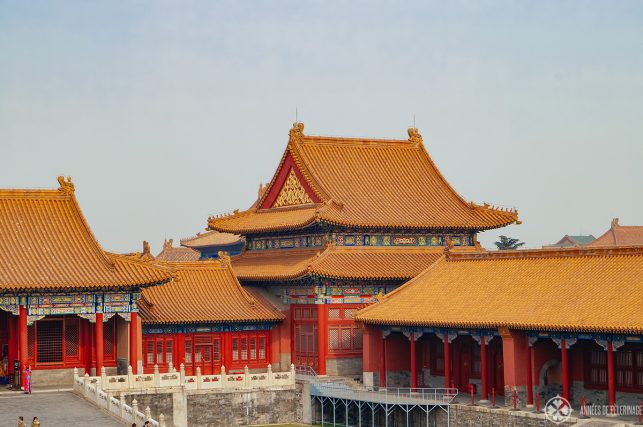
Also quite lovely were the many structures marking the corners of each courtyard – terraced tiles and sweeping rooftops everywhere you look!
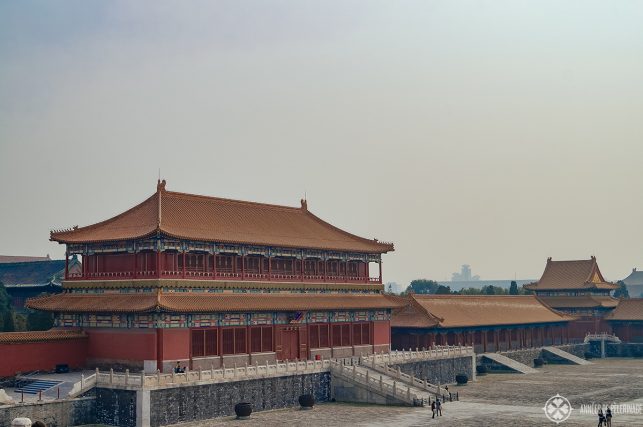
Glancing to the sides of the wide-open courtyards you will pass by more impressive structures and gates. Like the Gate of Auspicious Harmony seen on the pictures above. If you ask me, these Emperors should have decided for a bit more variation in their naming. It’s really hard to keep track!
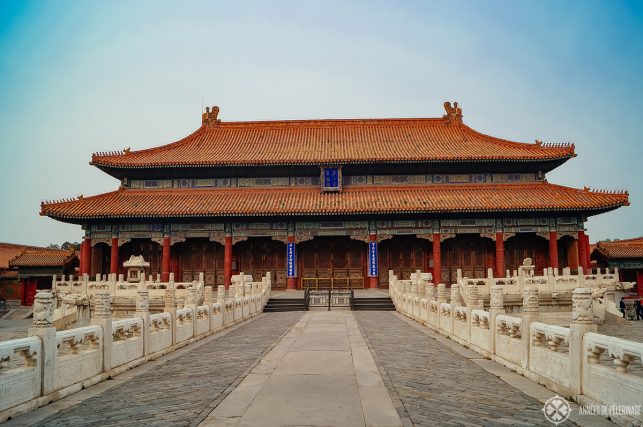
The Palace of Heavenly Purity (not Harmony for a change!) will mark the center of the inner court. Here is where the emperor had his quarters – separated from the empress. As you can see, the only real difference between the other palaces and gates lies in a number of bays and height. The audio guide made sure to list some other aspects, I almost instantly forgot.
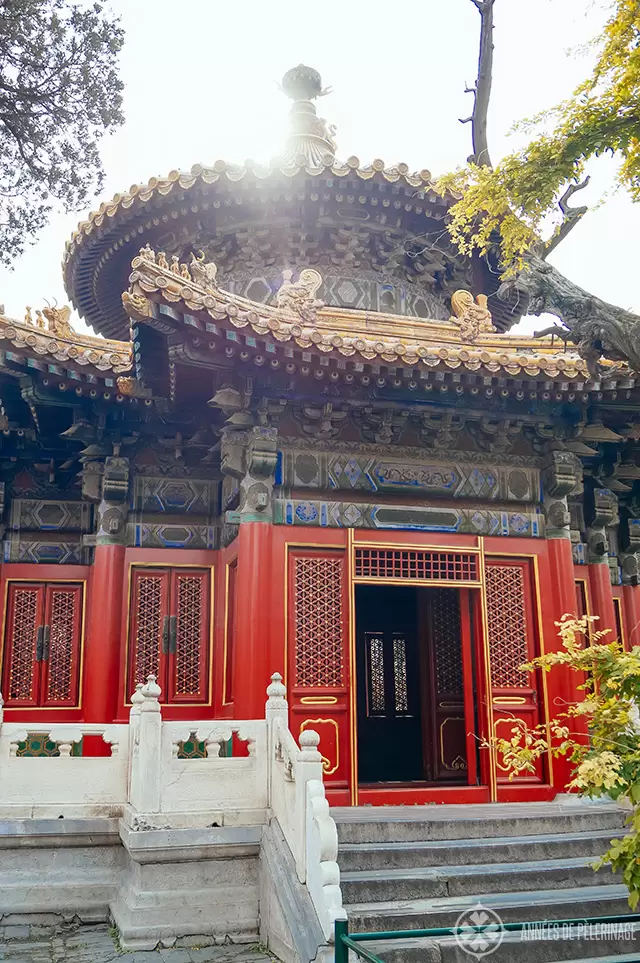
That is not to say, in fact, that the Forbidden City is boring. I at least very much enjoyed walking along the north-south axis! Besides, after the Inner Court follows the Imperial Garden. Inside this garden, you might have guessed, lies another palace (Hall of Imperial Peace).
Flanking the Hall are two lovely pavilions. Partially hidden behind high cedars, I’d like to believe these were tea houses. The names are quite lovely as well: Hall of Myriad Springtimes and Pavilion of One Thousand Autumns – makes you wonder what happened to summer and winter!
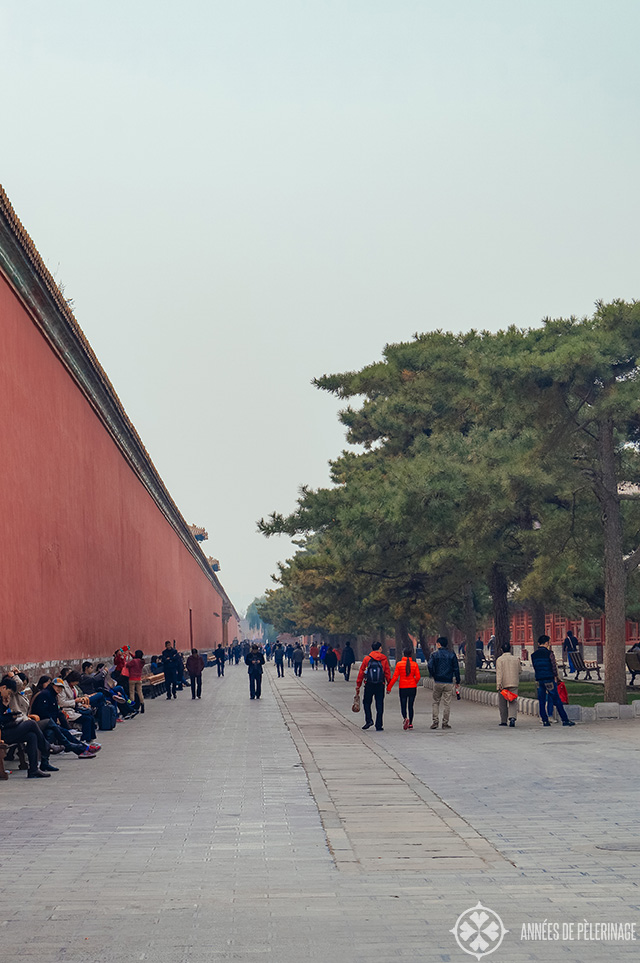
With this ceremonial garden ends the kilometer-long central axis of the Forbidden City. You will then pass the inner wall and enter the outer palace grounds. Along that will be located tons of souvenir shops and quite a lot of restaurants as well. On a normal smoggy day in Beijing, you can’t even see the end of the ancient city wall.
The end of the central axis of the Forbidden City
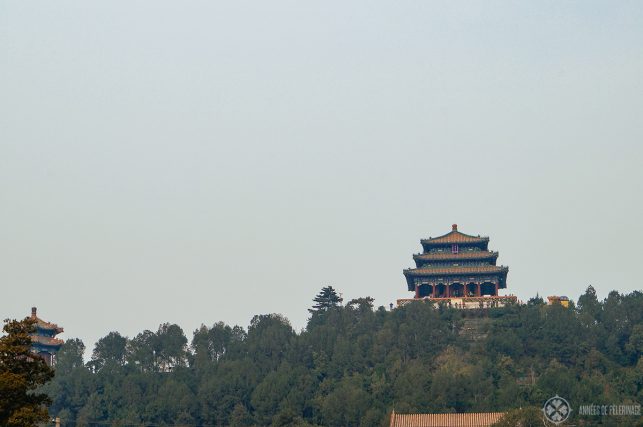
Now you have basically two choices. You can either call it a day and move on to Jingshan Park. The Jingshan Park is a huge artificial hill, said to be constructed entirely from the soil excavated when digging the moat around the palace. From here you will have a lovely view of the whole palace complex and Beijing. Know then, that you have not seen a third of the Forbidden City by then and you will not be able to enter again.
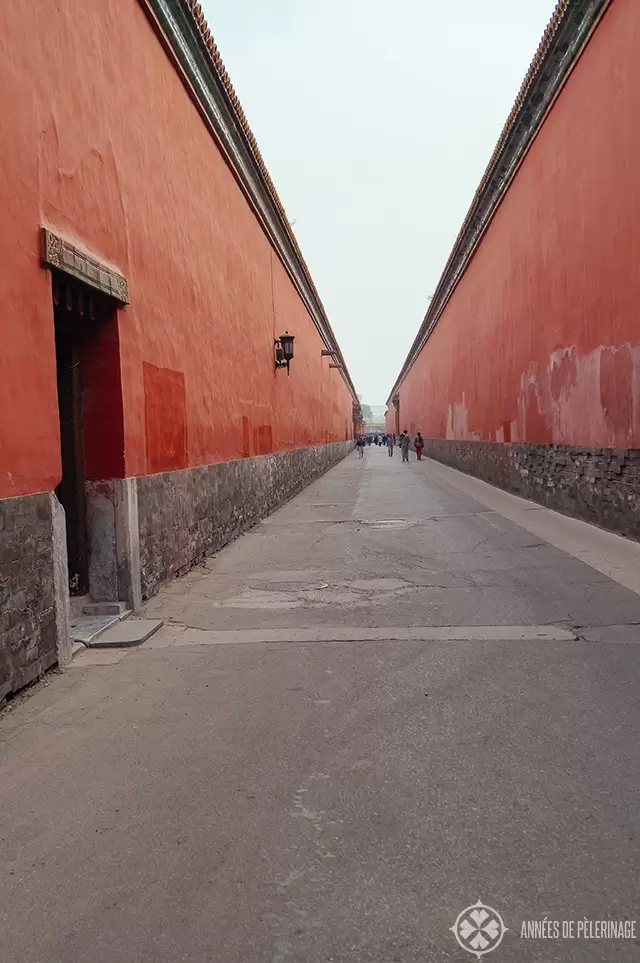
Instead, you can turn to the right or the left and follow the maze of the red walls. Every single door will open into another smaller courtyard. In days past these were the living Quarters of concubines, princes and other members of the Imperial Household.
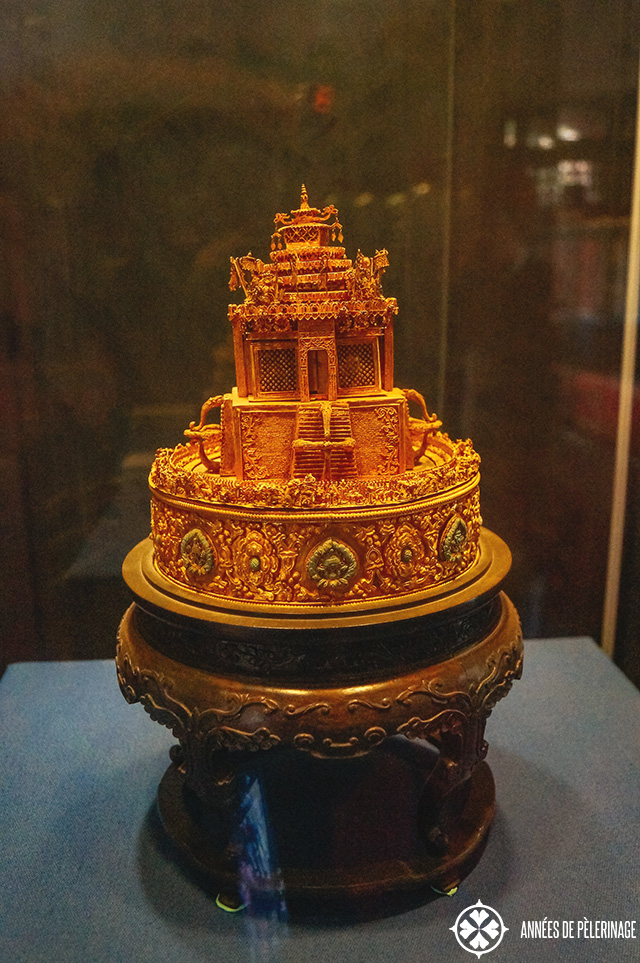
These days a museum hides in every one of the palaces of the imperial family. Gold, jade, porcelain – the collections of the Palace Museum in Beijing are stunning and worth their own visit. For the sake of brevity, I shall only tell you, that another entire day will be needed to explore these enticing museums. But if you are a fan of Chinese culture, it is worth it!
Another Inner Court inside the Forbidden City: The Palace of Tranquil Longevity
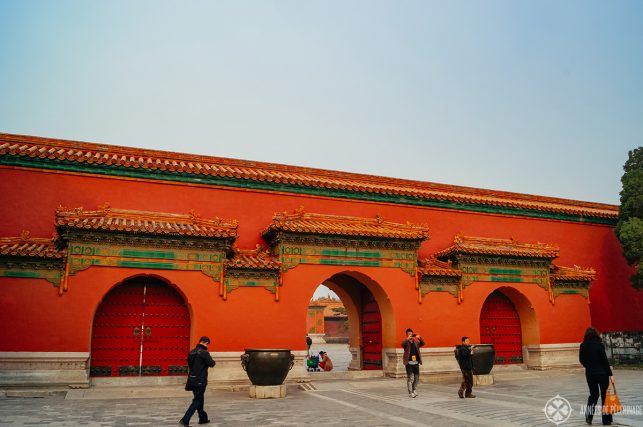
To the west of the central axis hides, still within the Forbidden City, another Inner Court. Built by an emperor as a retreat after his retirement, you will enter the Palace of Tranquil Longevity through more gates – yet on a slightly smaller scale.
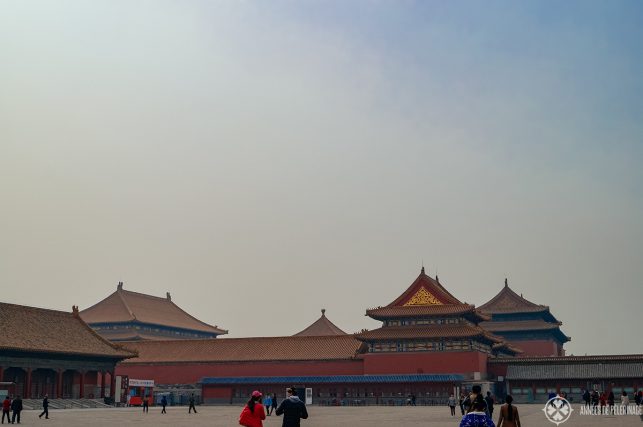
To give you some sense of time – by now I was roughly 6 hours walking inside the Forbidden City. So it almost struck me like a physical blow when I noticed that here another day of exploration waited for me.
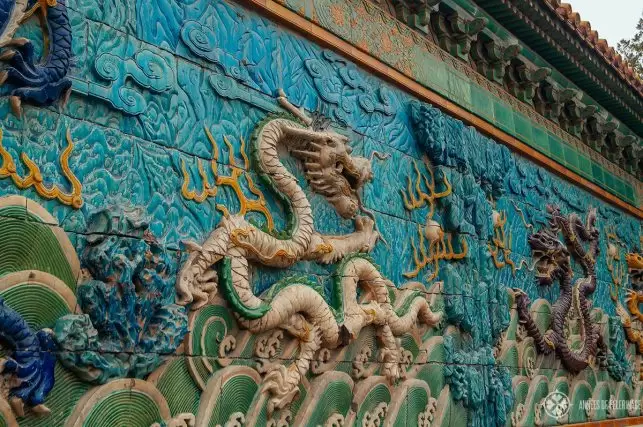
The Palace of Tranquil Longevity is most famous for its Nine-Dragon Screen. To be fair, this tile-glazed mural is huge but really could not impress me with its details. It looks pretty, but not so sure about the craftsmanship.
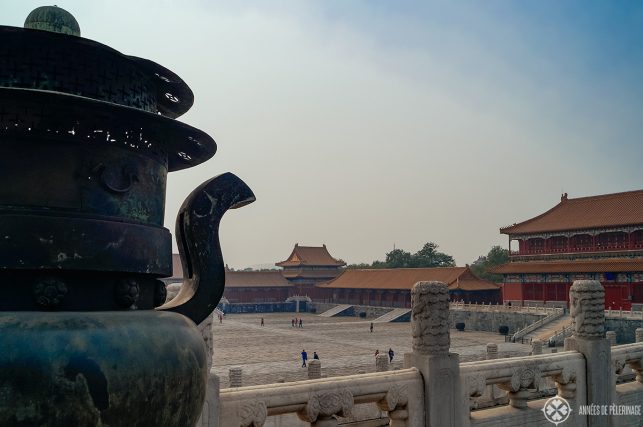
I ended my tour here and went back to my hotel (I stayed at the Aman Resort at the Summer Palace). It was slowly getting darker by now. I was, to say the least, quite tired already. My feet, sore from the cumbersome cobbles, mechanically prodded onwards, but my mind was already clogged with too much megalomaniac input. Looking at the big keeps located in the corners of the outer wall of the Forbidden City, I realized that I still have not even seen half of it.
In a way, I wished I would have had two days to see it all. I did feel quite tired at the end of the day and I was barely recognizing all the fabled artifacts inside the Treasury Museum anymore. It’s quite easy to suffer from a sensory overload here.
Last thoughts on the Forbidden City in Beijing
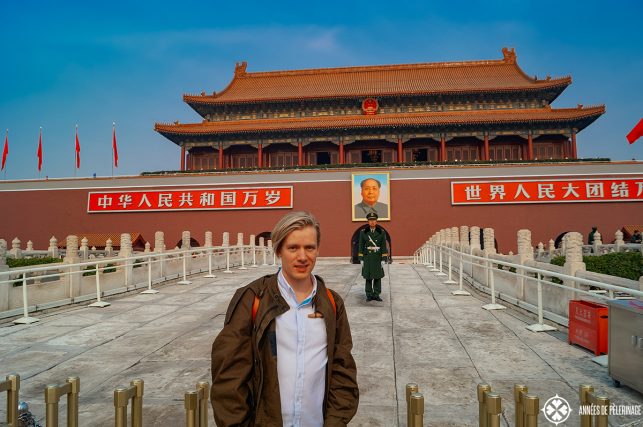
Did the Forbidden City hold true to its promise of a once in a lifetime experience? Quite frankly it surpassed my expectations. It is hard to comprehend how big it really is – even on your second visit. I’ve seen the Vatican, I’ve seen Versailles, I’ve seen the Imperial Palace in Tokyo, I’ve seen the Pyramids and I have seen probably every other imperial piece of architecture around the world – nothing can compare!
In all honesty, I can say – everyone should visit this UNESCO World Heritage site at least once! It will stun you like probably no other place on this planet – even if you don’t like the extremely colorful pavilions and gigantic avenues.
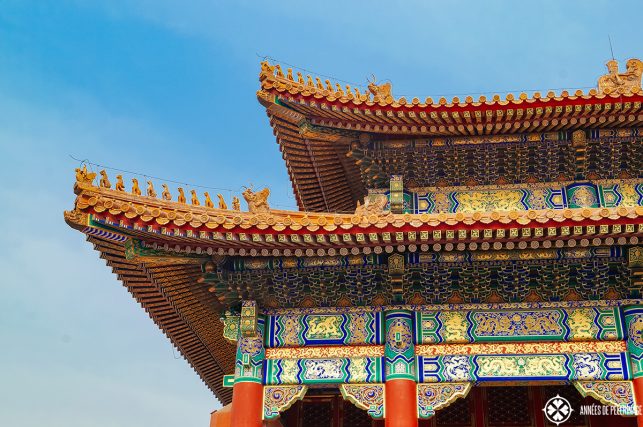
To me at least it seemed as if the little dragon gargoyles on each roof ridge were whispering: “One day you shall return and explore the rest of us!”
Forbidden city opening hours
- April to October: 8:30 am – 5 pm
- November to March 8:30 am – 4:30 pm
Please be aware that the Forbidden City is closed on Mondays and the last entry time is 50 minutes prior to closing time. I do recommend going first things in the morning.
Ticket Price and where to buy the tickets for the Forbidden Tickets
The museum has a maximum capacity of 80,000 visitors per day. Except for national holidays, you should have no problem getting a ticket. There is a ticket window near the Merdian Gate open to foreign tourists, but it’s probably better to go through an agency and buy them in advance. I recommend buying it on GetYourGuide and I am not saying this, because I am affiliated with them. It’s fast, easy. and you got a reputable German company as a guarantee behind it.
Ticket Price:
- April to October: 60 CNY
- November to March: 40 CNY
The Treasure Gallery and the Clock & Watch Gallery are an extra 10 CNY each. Only get those tickets if you want to spend a full day inside the Forbidden city – otherwise, you won’t have the time to see it all.
How to get to the Forbidden city
You can only enter through the Meridian Gate, which is the south gate. You can take the Subways Line 1 and get off at Tiananmen East Station and take Exit A and walk towards the Tiananmen Tower. It’s quite a bit of walking. Try not to take a wrong exist as pedestrian traffic is highly regulated around the square and you might be re-routed multiple times.
As an alternative, you could also get off at Qianmen Station (Exit A) on Subway Line 2. In this case, you have to walk all across Tiananmen Square. This is not that bad a choice, because you will probably want to see that part as well.
So how do you feel about the Forbidden City? Have you been there already or plan to go? Tell me your thoughts in the comment section below!
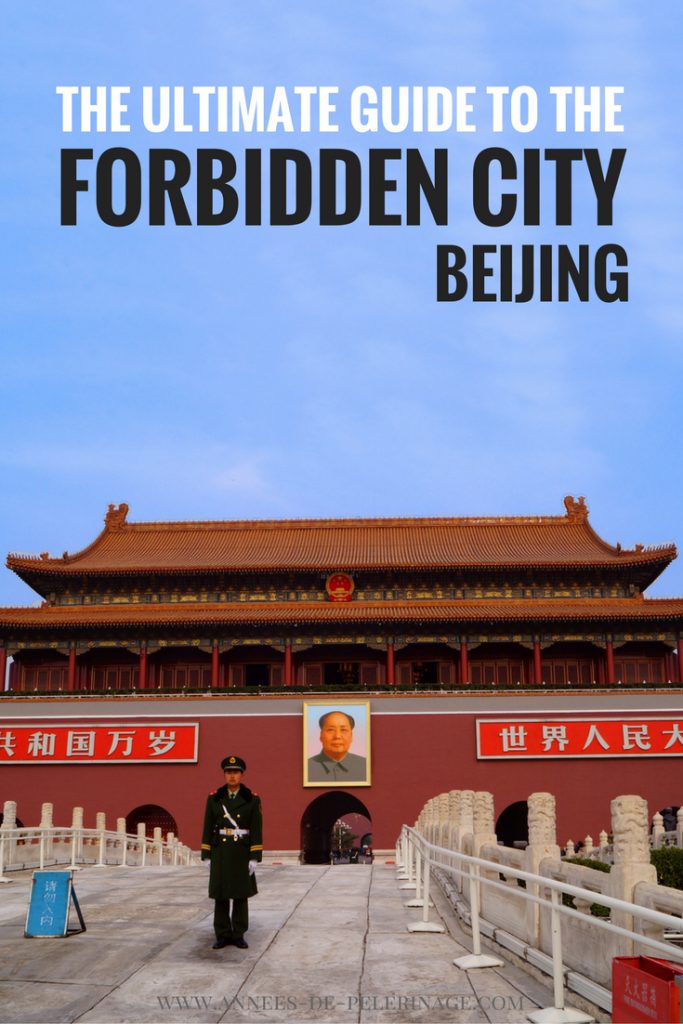


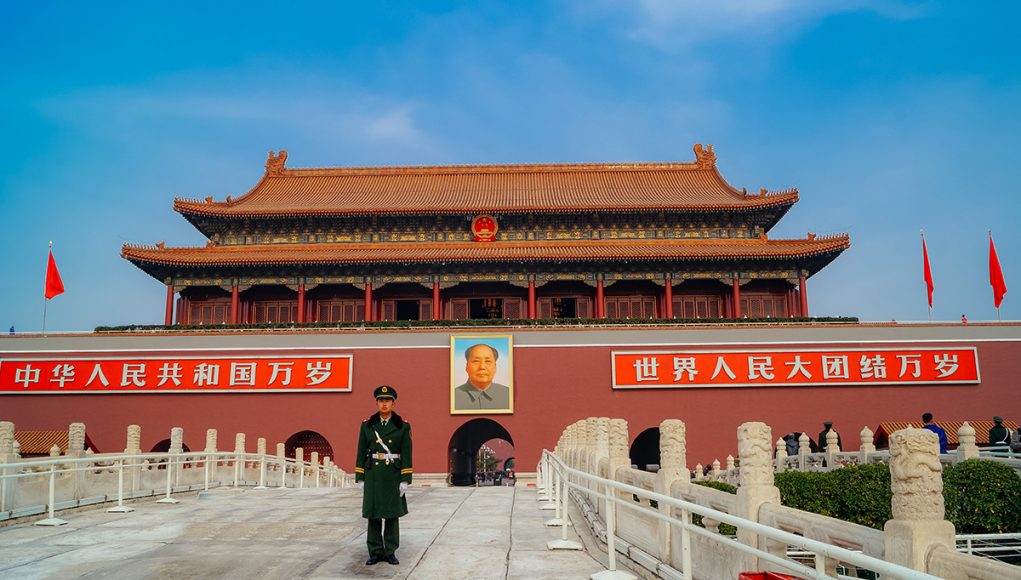
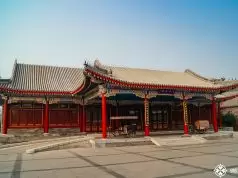

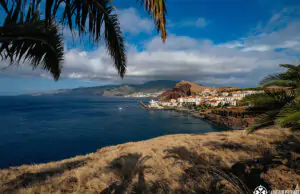
I didn’t really know too much about this, so thanks for sharing. I agree, it looks like a massive place to explore!
It sure is! But unlike other massive places on earth this one is actually quite refined as well!
Thank you for all the photos! I was able to visit it in April of 2008, and this brought back many memories. Such an amazing place!